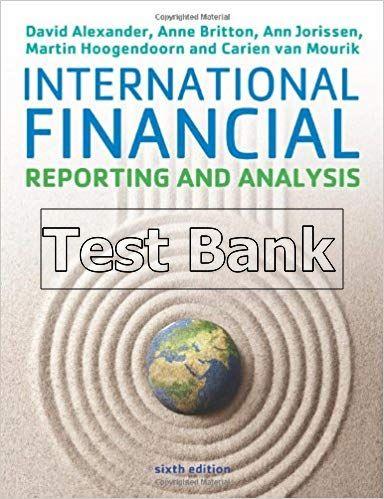

Chapter 2 – International Accounting Differences
TRUE/FALSE
1. A decrease in information asymmetry between shareholders and companies increases the cost of capital.
ANS: F PTS: 1 TOP: Introduction
2. The difference in providers of finance is one of the key causes of international differences in financial reporting.
ANS: T PTS: 1 TOP: Origins of national differences
3. In countries that are classified as Code Law countries the degree of enforcement of investor protection is much stricter.
ANS: T PTS: 1 TOP: Origins of national differences
4. In most countries with an active equity market the legal system is the common law system.
ANS: T PTS: 1 TOP: Origins of national differences
5. In countries classified as Code Law countries ‘the substance’ dominates ‘the legal form’.
ANS: F PTS: 1 TOP: Differences in accounting systems
MULTIPLE CHOICE
1. The use of another company as a performance yardstick is jeopardized by;
a. language differences
b. accounting flexibility
c. currency differences
d. different accounting periods
ANS: B PTS: 1 TOP: Introduction
2. Which of the following is NOT classified as a Common Law country’
a. England
b. Wales
c. Scotland
d. Ireland
ANS: C PTS: 1 TOP: Origins of national differences
3. Hofstede’s concept of collectivism implies that;
a. People are loyal to their relatives and social group
b. Worker cooperatives are common
c. Family is more important than society
d. People like to acquire (collect) material wealth
ANS: A PTS: 1 TOP: Origins of national differences
4. Which of the following is an ‘accounting value’ as defined by Gray (1988)
a. Professionalism versus Adhocracy
b. Rigidity versus Flexibility
c. Pessimism versus Optimism
d. Secrecy versus Transparency
ANS: D PTS: 1 TOP: Origins of national differences
5. The recording of deferred tax on the balance sheet is well established in which one of the following countries?
a. Denmark
b. Sweden
c. Norway
d. Germany
ANS: A PTS: 1 TOP: Characteristics & differences in National GAAP
